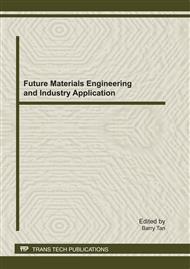p.8
p.14
p.18
p.23
p.28
p.33
p.38
p.44
p.50
Finite Element Simulation and Respond Surface Optimization on Stretch Bending of Square Tube Aluminum Profile
Abstract:
With the adoption of ABAQUS/Explicit as the simulation platform, a 3D finite element model has been established to simulate the stretch bending of square tube aluminum profile which is used as the door frame of fork lifter. Four characteristic points are put forward to evaluate the distortion of cross section during deformation, and the influence to distortion of cross section from some key parameters, such as bending radius and thickness of profile, is analyzed. An orthogonal experiment is designed to evaluate the influence to deformation from other forming parameters, including preload, fill rally and filling pressure which occurred in the stretch bending process. Then neural network based response surface method and genetic algorithm are used to optimize the parameters mentioned above. Finite element simulation proved that the optimized result is valuable to reduce the distortion of cross section of profile and improve formability.
Info:
Periodical:
Pages:
28-32
Citation:
Online since:
October 2011
Authors:
Price:
Сopyright:
© 2012 Trans Tech Publications Ltd. All Rights Reserved
Share:
Citation:


